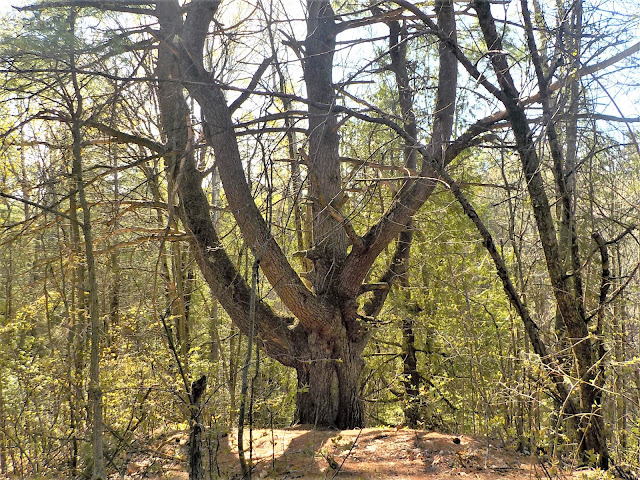I had originally planted a few snake's head fritillary bulbs in the rock garden running along one side of the house on our semi-'ravine' lot. Called that though it's just a slight downward angle from the front to the back of our house lot. They have bloomed faithfully ever since and that's decades. Last year to my astonishment, I discovered a snake's head flourishing beside a bed of lillies quite distant from the original bulb placements. And now, suddenly, it's begun to bloom, while those in the rock garden haven't yet set a flower head.
The garden scilla are happily in bloom, in little colonies both in the back garden and at the front of the house, little bright blue sprays of delicate flowers that come out before the grape hyacinths which were planted about the same era. The scilla are later plantings, but earlier bloomers at a time when the garden is badly in need of a visual reminder that is, after all, a garden.
This has been another superb spring day. A trifle cooler than the last two days, but that's on the verge of correction with the rest of the week projected to be closer to 20C, than today's 13C, and it will be welcome. But the sun couldn't be faulted for doing it's best to warm the atmosphere. And much of the forest is still open to the sun, although foliage is leafing out at an amazing pace. A week ago there was the occasional faint haze of green. Today the haze has developed to swiftly maturing leaves through the masts of the forest canopy's deciduous trees.
I hadn't been expecting to see violets yet in bloom,but Irving pointed out, by the trail, a delicate little cluster of violets and one tiny mauve bloom, awaiting company of its sister-blooms. Jackie and Jillie find ample cause to keep their little snouts to the ground, but flowering violets are of little interest to them. Mind, if fru
it-bearing plants like early-to-fruit wild strawberries at nose level met them, they'd hastily accommodate their presence by eating them.
It was such a superb day, we thought we'd venture a little further off the beaten track as it were, this afternoon. And Jackie and Jillie are always pleased when we're off somewhere they're not entirely familiar with. There's an access bridge to the area we meant to visit. Jackie and Jillie have been there before; in our daily trysts with the forest; they've been in this out-of-their-memory-familiarity at least a half-dozen times. But it's that unfamiliarity that enlivens them.
It is as though they're on an expeditionary course of discovery. They run ahead, they double back. And when we arrive at the little bridge fording an auxiliary of the main creek, they stop. Jackie sniffs it suspiciously, something he never does with the other bridges on approaching them. But he follows me trustingly and we're over it. It's an older bridge with the floorboards further apart, and perhaps their little paws have a tendency to stick or seem to fall through and this unnerves them.
Jillie stops altogether, unwilling to trust her little body to the unfamiliar and to her, obviously threatening. Irving picks her up and carries her across and she's ready to romp. And romp they do, as we climb another hill to the level of a part of the ravine we were closely familiar with many years ago. It has a parklike atmosphere, where a pollinating garden was established in the interim, because at that level there was a street of houses built decades ago when we stopped accessing the area.
But beyond it is the forest again with its familiar trails, some of which, perched on hillsides, have since collapsed into the ravine. There was a time when we ventured long and far on the network of trails, much more so than we now do. When we're there I always like to visit with a majestic old pine that I think of as the grandfather of all pines in this forest. It's huge, its heavy boughs testament to the fact that years ago it had room to sprawl. Its tendency to send out arms instead of growing straight upward explains its presence to this day.
In the sense that when the forest was still a virgin forest and under logging, the pine was ignored while other, tall and straight-growing pines were forested as perfect specimens to be used for Britain's sailing fleet. Now it is huge and looks over a dominion of smaller pines, fir, cedars, spruce and hemlock. But it is the largest of them all.




.JPG)


.JPG)


No comments:
Post a Comment